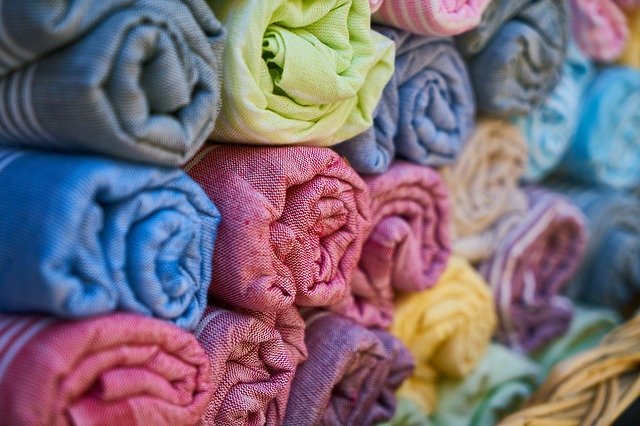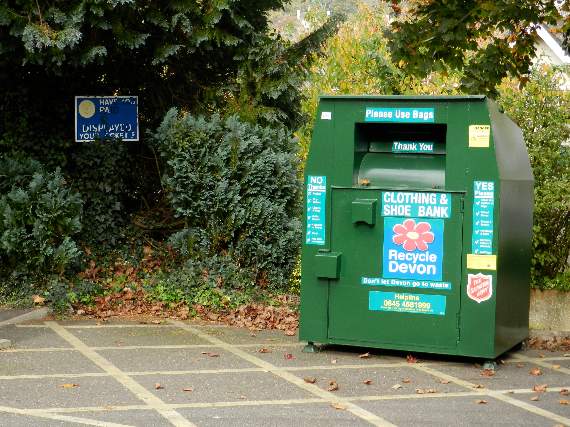The science of materials is important as it tells us which are the best materials to use for different things, like not using chocolate for a teapot, or glass for a trampoline! It also tells us about how to dispose or recycle items safely and sustainably at the end of their lives.
Textiles is the name given to a range of polymer fibres woven into fabrics. All our clothes are textiles, as are blankets, towels and bedding. We use different types of fabric for different uses, such as waterproof fabric for coats and warm, insulating wool for cosy jumpers. Textiles can either be man-made polymers made from synthetic plastic fabrics such as polyester and nylon or from fibres grown naturally as animal fur (wool, cashmere) or plants (linen, cotton, jute).
Clothes and shoes can be recycled everywhere in Devon. Most districts collect bags of clothes and shoes in kerbside collections (see our District Recycling Sheets) while larger bags of clothes can be taken to clothes banks and at recycling centres. Find your nearest one on our main Recycling website.
The worksheets on this page will help young people understand the science of textiles. We hope doing these activities will create better scientists and more critical thinkers. We know the wicked problems (complex and difficult issues like climate change and biodiversity loss) we are leaving the next generation will need some innovative thinking to solve them!
Downloadable Worksheets
Textiles Quizzes
Home Education Worksheet:
(pdf) Download Home Education Worksheet: How quickly does fabric decompose?
(Word) Download Home Education Worksheet: How quickly does fabric decompose?
Visit our Home Education pages for more Activities suitable for Home Learning.



